|
2022-11-6
關於中日甲午海戰中民族英雄鄧世昌的死,在百度百科中是如此介紹的:
可是當年在鎮遠艦上當艦長的美籍清軍軍官加北洋海軍總教習馬吉芬(Philo Norton McGiffin,1860-1897),事後寫了一篇回憶文章《鴨綠江邊的海戰》(The Battle of the Yalu)。文中是這樣回憶鄧世昌的殉國過程的:
During the confusion of our line consequent upon being out-maneuvered, the Chen Yuen passed under our stern and joined the Lai Yuen and surviving ships of the right wing. The Ping Yuen and Kwang Ping, now coming up, threatened the Akagi and Saikio. Signals were made on the Matsushima, and the Flying Squadron maneuvered to cover the endangered vessels. About this time the Chih Yuen boldly, if somewhat foolhardily, bore down on the Flying Squadron’s line, possibly to attack the two mentioned vessels. Just what happened no one seems to know, but apparently she was struck below the waterline by a heavy shell — either a ten-inch or a thirteen-inch. Be that as it may, she took a heavy list, and, thus fatally injured, her commander, Tang Shi Chang, a most courageous albeit somewhat obstinate officer, resolved at least to avenge himself and charged one of the largest vessels, intending to ram. A hurricane of projectiles from both heavy and machine guns swept down upon his ship, the list became more pronounced, and just before getting home to his intended victim, his ship rolled over and then plunged, bows first, into the depths, righting herself as she sank, her screws whirling in the air and carrying down all hands, including the chief engineer, Mr. Purvis, a gentleman, and a most efficient officer, who was shut up in the engine room. Seven of her crew clung to one of the circular life-buoys kept on the bridge, and were drifted by the tide toward the coast, where they were rescued by a junk. The stories of these men vary so much in general as to be unreliable, but all agree on one incident. Captain Tang had a large dog of a most vicious temper, unruly at times even with his master. After the ship sank Captain Tang, who could not swim, managed to get to an oar or some small piece of wood — enough to have supported him had not his dog swum to him, and, climbing up on him, forced him to release his grasp and thus miserably drown, the brute sharing his fate — perhaps the only case on record of a man drowned by his dog.
這一段文字,至為重要,說明第一在大清北洋海軍的鐵甲艦上服役的外籍水手,不止一位,其中就包括艦上的總工程師。第二是致遠艦全艦官兵250餘人,也並沒有全部殉難,還有至少七名倖存者。將這段文字的最後一部分,翻譯成中文如下:
先不說咱們致遠艦的這位鄧艦長是如何地英雄神武奮勇自殺萬古長青和激勵國人,單說這位來自美國的鎮遠艦的馬吉芬艦長,確確實實是一位偉大的國際主義戰士,他是美國海軍軍事學院畢業,不遠萬里,來到中國,幫助前清建立和訓練了北洋海軍。
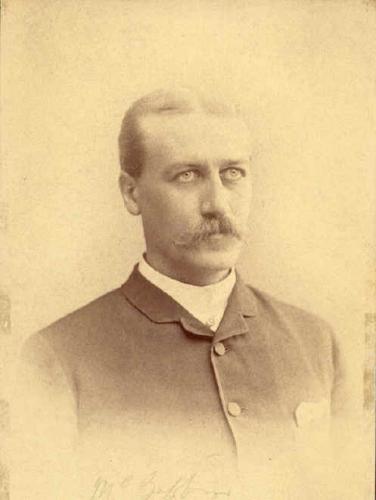
甲午海戰期間大清北洋海軍鎮遠艦美籍艦長馬吉芬(Captain Philo Norton McGiffin,1860-1897)
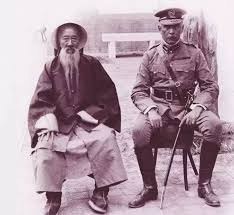
大清國的修補匠李鴻章和北洋海軍鎮遠艦美籍艦長馬吉芬合影
McGiffin went to China and was awarded a commission in the Imperial Chinese Navy. He was appointed by Li Hongzhang, Viceroy of Zhili and Beiyang Trade Minister of the Qing dynasty, as a professor at China’s naval college in Tianjin in 1885. He also worked as a hydrographic surveyor on the Korean coast, helped oversee the construction of four warships being built in Britain for China, and was appointed to build and head a new naval college in Weihaiwei, Shandong.
甲午海戰期間,馬吉芬擔任大清北洋海軍鎮遠艦艦長,並身先士卒,親赴前線。在9月17號黃海海戰中,其炮彈直接命中日本旗艦松島號。後在自己身負重傷,鎮遠艦也被日軍重創的情況下,沉着機制,把鎮遠艦安全帶回了威海衛。
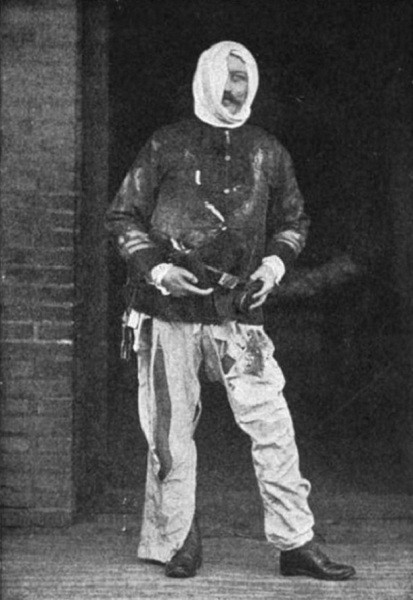
1894年9月17日在黃海海戰中英勇負傷了的鎮遠艦美籍艦長馬吉芬,一隻眼失明,五年後悲慘去世,享年37歲。
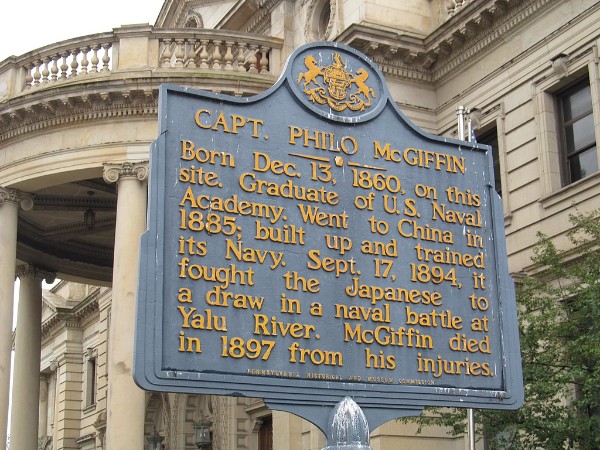
關於馬吉芬幫助大清抗日的英勇事跡,勤勞勇敢也愛好和平發明了春秋筆法和文字獄的中國人民,早已經忘記了。只有亡我之心不死的美國人民,還清清楚楚地記得。
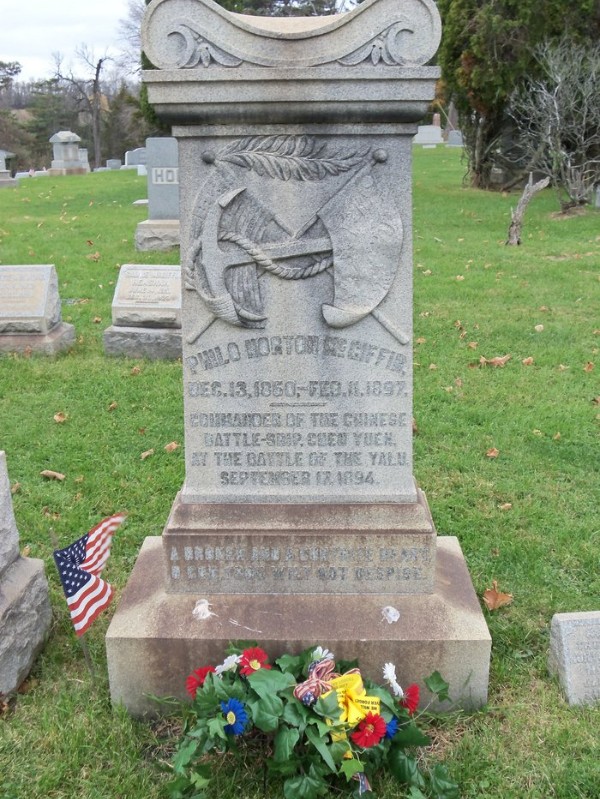
|
|
